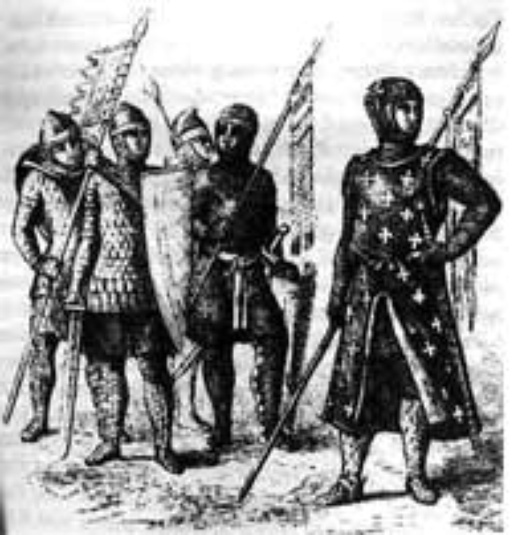Armed peace in Kosovo
Published on
Translation by:
Francesca ReinhardtAfter the wave of inter-ethnic violence in March 2004, is it possible to be optimistic about the future of Kosovo? The absence of a fixed status for the territory does not bode well.
 March 2004: the death of three Albanian children in the village of Cabra in Kosovo sets off a new wave of violence in this region controlled by the United Nations. The presence of tens of thousands of international peacekeepers could not contain the mobs, nor prevent the acts of vengeance against local civilians, public buildings, Orthodox religious monuments and the UNMIK (United Nations Mission for Kosovo). The damage was serious: 19 dead and hundreds wounded. The reputation of the UNMIK was also badly affected given that its mission, defined by a UN resolution at the end of the 1999 conflict, was to ensure the safety of all the inhabitants of Serbia’s Albanian-speaking province.
March 2004: the death of three Albanian children in the village of Cabra in Kosovo sets off a new wave of violence in this region controlled by the United Nations. The presence of tens of thousands of international peacekeepers could not contain the mobs, nor prevent the acts of vengeance against local civilians, public buildings, Orthodox religious monuments and the UNMIK (United Nations Mission for Kosovo). The damage was serious: 19 dead and hundreds wounded. The reputation of the UNMIK was also badly affected given that its mission, defined by a UN resolution at the end of the 1999 conflict, was to ensure the safety of all the inhabitants of Serbia’s Albanian-speaking province.
Europe once again divided over the Ibar
In March 1999, NATO entered into a war against the Federal Republic of Yugoslavia (FRY) in a bid to protect the rights of the Albanian minority living there. In response, the Serbian army forcibly expelled the Albanians of Kosovo. The Kumanovo peace accords signed in June of the same year were intended to ensure the right of return for Albanians expelled from their homes, as well as the safety and equality of all citizens of the province. Kosovo was to remain a province of the Serbian state, but governed by MINUK as though it were a UN protectorate. As the Serbian army and police forces retreated, the Deutsch Mark and subsequently the Euro replaced the Yugoslav Dinar as the official currency.
Since the establishment of the Kosovo Peace Keeping Force in June 1999, aggression on the part of ethnic Albanians against other communities has exploded. This includes reprisals against the Serb population, but also against Romany people and other ethnic minorities. A new round of ethnic cleansing has arisen, with the aim of reducing the pockets of non-Albanian ethnic groups and pushing the Serbs to the north of the country. The city of Kosovska Mitrovica has become the symbol of this new crisis in Europe, with its bridge on the river Ibar guarded by international peace-keepers separating the two communities. Violence erupted sporadically in 2000 and 2001, but none of these excesses compare to what happened in March 2004.
On March 17th and 18th, organised groups across the whole of the province attacked Serbian homes and religious monuments, destroying 550 houses and 27 churches and monasteries and forcing more than 4,000 people to flee. Almost 51,000 people were involved in these outbursts, which took place under the eyes of international peacekeepers. In Serbia, Belgrade and Niš, to the south of the country, mosques were burned but the international community interpreted these as signs of religious conflict rather than signs of anger and despair.
The violent clashes of mid-March were a failure for the numerous peacekeeping bodies stationed in Kosovo, including the UNMIK, the Kosovo Force (KFOR), and the Kosovo Police Service (KPS). The Human Rights Watch (HRW) delivered a very critical report in July, stating “words alone are not enough to protect minority communities or to create a multiethnic Kosovo. What we need is serious reform in the structure of international security.”
But the only result of the crisis in Kosovo has been the definition of a viable status for the territory. The credo of the International Community and that of the European Union, in particular, remains the same: “standards before status.” However the safety of people is an important part of these standards, as well as cohabitation between the two main ethnic groups. Among the multitude of criteria to be examined next year in order to assess Kosovo’s progress, certain ones are absolutely imperative. The Norwegian ambassador Kai Eide, rushed over to Kosovo by UN Secretary General Kofi Annan, has recommended that decentralisation should be an essential criterion, as well as the return of refugees, security, and freedom of movement.
If and when these conditions are met, a definitive status will be proposed. Since the absence of a negotiated solution to the problem of Kosovo could put the entire region in danger, the EU rejects all notion of independence or partition of the territory which could challenge the current borders in the region (in Bosnia or Macedonia for example.) The dilemma is as follows: how to resolve the current crisis without upsetting Belgrade and the Serbian population in Kosovo, while ensuring the safety and autonomous development of the Albanian Kosovans. Any solution will require that the two parties accept a compromise, such as a high degree of regional sovereignty at the heart of the Serbian state.
However the only way to get away from the problem of borders is to speed up the integration of the Balkans (namely Bosnia-Herzegovina, Serbia-Montenegro and Kosovo, Macedonia, Albania) into the EU. Former president of the EU Commission, Romano Prodi, declared at the European Summit at Thessalonika in June 2003 that “the integration of the Balkans, including Kosovo, into the European Union is from now on an irreversible movement.” It may also be the only hope for durable peace in the region.
Translated from Kosovo : la paix armée



